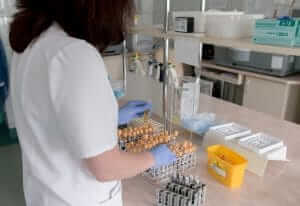Sperm Count
A man’s sperm count refers to the number of sperm in each millilitre of his semen. You can think of this as the density of sperm per millilitre. Average sperm counts range from 20-40 million sperm per millilitre, but they are falling at 1-2% per year.

A low sperm count is called ‘oligospermia‘. Today, the World Health Organisation defines a low sperm count as below 15 million sperm per millilitre. Just a few years ago this figure was 20 million – a sign of how far sperm counts are falling worldwide.
‘Sperm count’ can also refer to the total number of sperm in a man’s ejaculation, rather than the density of sperm per millilitre.
Why does sperm count matter?
The higher a man’s sperm count the greater his fertility, and therefore the greater his chances of fertilising his partner’s egg. Having a low sperm count therefore makes it more difficult to father a child. A low sperm count isn’t the only factor in fertility – sperm viability and sperm motility are also important. But if the sperm count falls too low fatherhood becomes unlikely or even impossible. A complete absence of sperm is called ‘azoospermia’.
Because a man’s sperm count varies from day to day and even between different times of the day, it is often necessary to take several samples before deciding whether the count is too low. A sample’s sperm count can also vary according to how it was collected, with samples provided during intercourse often providing a higher figure.
